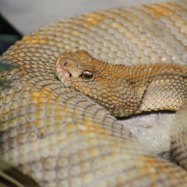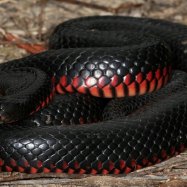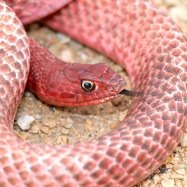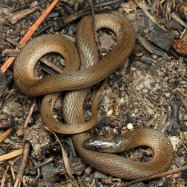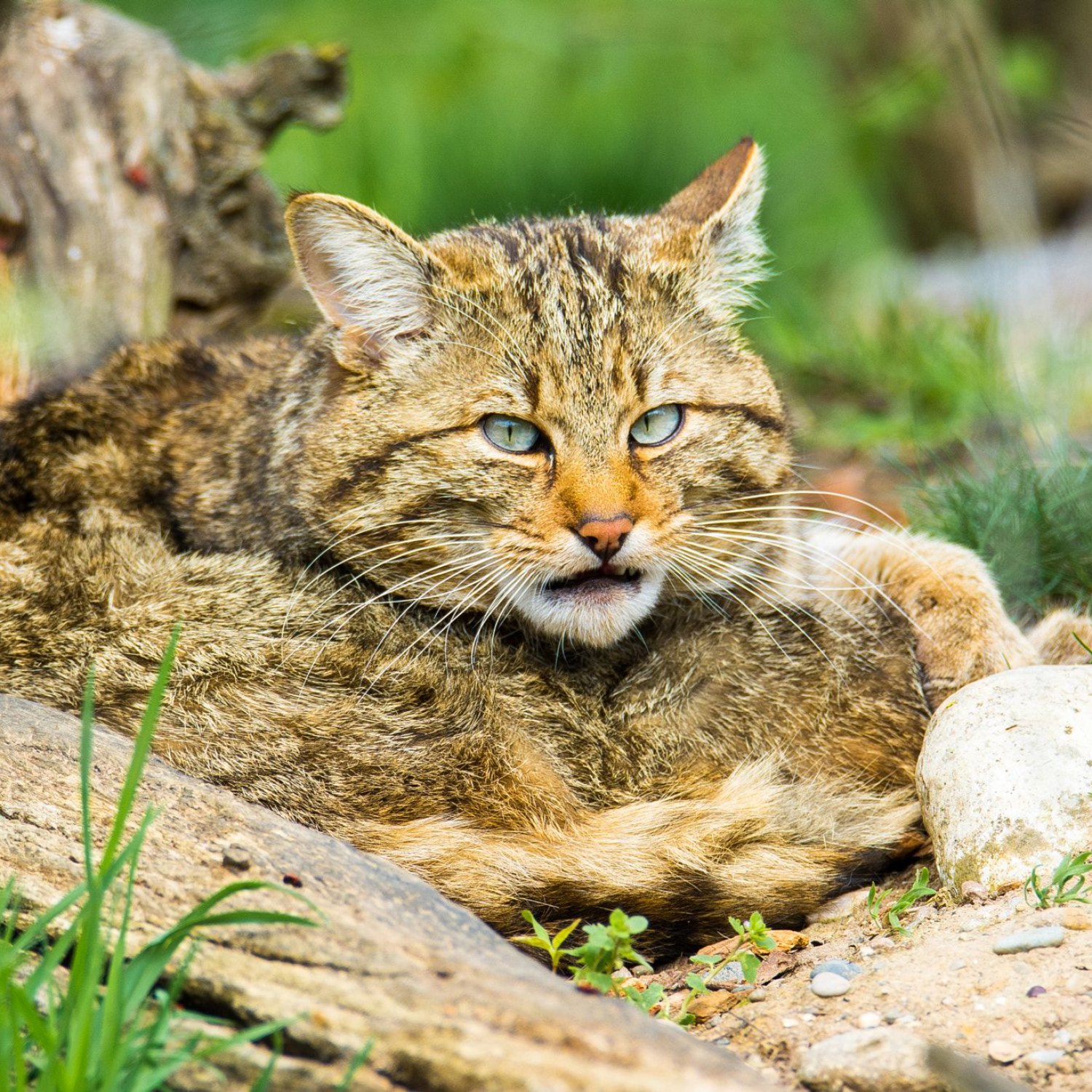
European Wildcat
52 to 100 cm (20 to 39 inches)
The European wildcat, also known as Felis silvestris, is a medium-sized and muscular feline that can grow up to 100 cm in length. This elusive creature is native to Europe and is a part of the Felidae family. Despite their name, wildcats prefer to avoid humans and are rarely seen in the wild. Their striking appearance and natural hunting abilities make them a fascinating animal to learn about. #EuropeanWildcat #FelisSilvestris #FelineFamily #Wildlife #Europe #FelidaeFamily
Animal Details Summary:
Common Name: European Wildcat
Kingdom: Animalia
Habitat: Wooded and forested areas
The Elusive and Endangered European Wildcat
The European Wildcat, also known as Felis silvestris or the common wildcat, is a fascinating and elusive member of the Felidae family. This species of feline is native to Europe and can be found in select countries such as Germany, France, Spain, Italy, and Scotland. Its unique physical characteristics, behavior, and habitat make it a valuable and interesting animal to study.The Classification of the European Wildcat
Before we delve into the fascinating world of the European Wildcat, let's first understand its classification European Wildcat. The European Wildcat (Felis silvestris) falls under the kingdom Animalia, phylum Chordata, and class Mammalia. Within the mammalian world, this wildcat belongs to the order Carnivora, which includes other meat-eating animals such as lions, tigers, and domestic cats. The wildcat's family is Felidae, which is the same family as other felines such as leopards, cheetahs, and cougars.The Habitat and Distribution of the European Wildcat
As the name suggests, the European Wildcat is native to Europe and can be found in different countries such as Germany, France, Spain, Italy, and Scotland. Within these countries, these wildcats tend to thrive in forested and wooded areas, making it challenging to spot them in the wild. They have adapted to living in these environments, using their stealth and agility to hunt and survive. However, they have faced challenges due to human activities, leading to a decrease in population and distribution.The Physical Characteristics of the European Wildcat
The European Wildcat has a distinctive and elegant appearance that sets it apart from its domestic cat counterparts. With a medium-sized and muscular body, these wildcats can reach a length of 52 to 100 cm (20 to 39 inches), and they can weigh up to 7 kg Eagle Ray. Their body shape is similar to that of a domestic cat, but they have longer legs and a shorter tail.One of the distinguishing features of the European Wildcat is its grayish-brown fur with dark stripes. This coloration helps them blend in with their natural surroundings, making it easier for them to hunt and avoid predators. They also have tufted ears, which are believed to aid in hearing and communicating with other wildcats.
The Behavior and Feeding Method of the European Wildcat
The European Wildcat is a solitary and nocturnal animal, making it a challenging animal to study in the wild. They are elusive and tend to avoid humans, making it difficult to track their behavior patterns. However, thanks to advanced technology and studies, we know that these wildcats are carnivores, meaning they eat meat.Their diet consists of small mammals such as rodents, rabbits, and birds. They are also known to hunt larger prey, such as hares or deer fawns, when available. These wildcats are excellent hunters, using their sharp claws, agility, and stealth to ambush their prey. Their hunting techniques are similar to that of their domestic cat cousins, but on a larger scale.
The Threats Facing the European Wildcat
Sadly, the European Wildcat is considered an endangered species due to human activities and habitat destruction. Their habitat has been drastically reduced due to deforestation and urbanization, pushing them further into isolation and decreasing their population. They are also at risk of hybridization with domestic cats, which can affect their gene pool and survival as a species.The Conservation Efforts for the European Wildcat
Fortunately, there are ongoing efforts to protect and increase the population of the European Wildcat. Various organizations and conservationists are working together to create awareness and implement measures to protect these wildcats. This includes reforestation and creating protected areas for them to thrive without human interference.The Importance of Studying the European Wildcat
Studying the European Wildcat is vital for various reasons. Firstly, it provides insights into the behavior and survival techniques of this elusive feline. With this knowledge, we can implement measures to protect and conserve them. Studying this species also helps us understand the impact of human activities on wildlife and how we can work towards coexisting with them.Furthermore, the European Wildcat is a valuable and essential part of our ecosystem. As carnivores, they help maintain the balance of predator-prey relationships, keeping populations of smaller animals in check. Their presence is crucial to the health and sustainability of their natural habitats.
Conclusion
In conclusion, the European Wildcat is an intriguing and endangered species that deserves our attention and protection. With its distinctive physical features, behavior, and habitat, it is a valuable animal to study. It serves as a reminder of the impact of human activities on wildlife and the importance of conservation efforts. We must all work towards preserving these beautiful felines for future generations to appreciate and admire.

European Wildcat
Animal Details European Wildcat - Scientific Name: Felis silvestris
- Category: Animals E
- Scientific Name: Felis silvestris
- Common Name: European Wildcat
- Kingdom: Animalia
- Phylum: Chordata
- Class: Mammalia
- Order: Carnivora
- Family: Felidae
- Habitat: Wooded and forested areas
- Feeding Method: Carnivorous
- Geographical Distribution: European countries such as Germany, France, Spain, Italy, and Scotland
- Country of Origin: Europe
- Location: Europe
- Animal Coloration: Grayish-brown with dark stripes
- Body Shape: Medium-sized and muscular
- Length: 52 to 100 cm (20 to 39 inches)
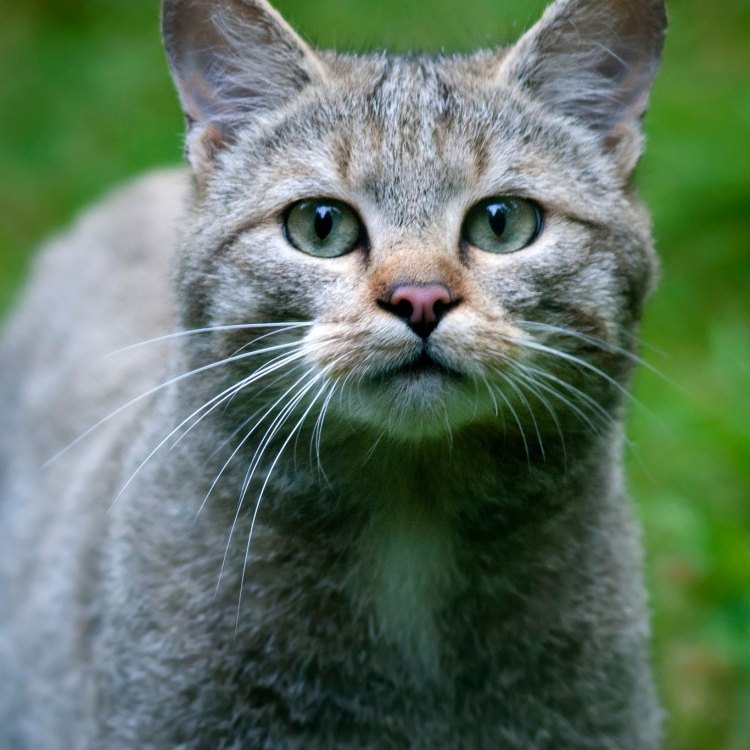
European Wildcat
- Adult Size: 60 to 90 cm (24 to 35 inches)
- Average Lifespan: 12 to 16 years
- Reproduction: Sexual
- Reproductive Behavior: Solitary with brief interactions during mating season
- Sound or Call: Mewing, hissing, growling
- Migration Pattern: Generally non-migratory
- Social Groups: Solitary
- Behavior: Nocturnal and secretive
- Threats: Habitat loss, hunting, hybridization with domestic cats
- Conservation Status: Near Threatened
- Impact on Ecosystem: Maintains rodent populations in check
- Human Use: Hunted in the past for fur
- Distinctive Features: Thick fur, bushy tail, and strong hind legs
- Interesting Facts: The European wildcat is one of the ancestors of the domestic cat
- Predator: Human
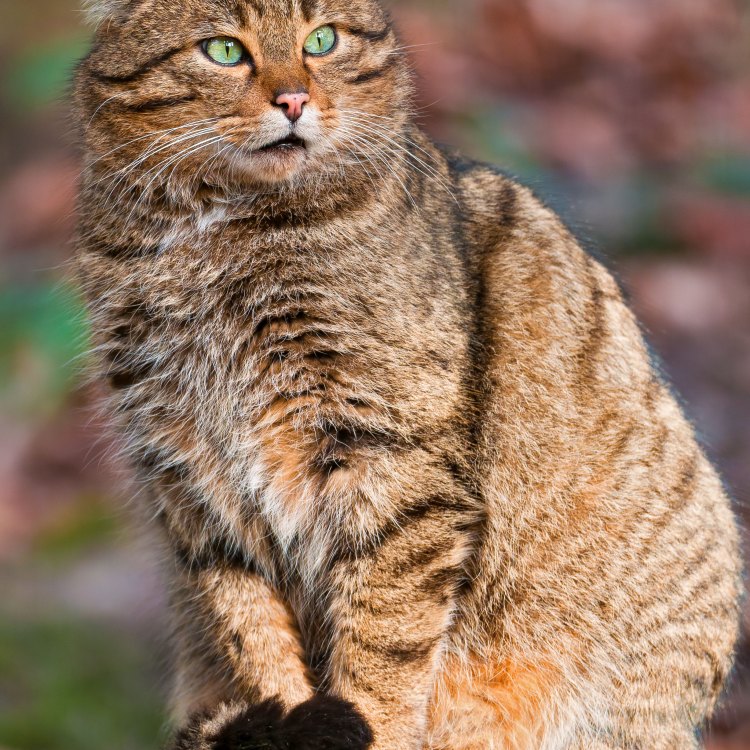
Felis silvestris
The Untold Story of the European Wildcat
Deep in the dense forests and rugged mountains of Europe, a fierce and elusive predator roams. It is the European wildcat, also known as the "Felis Silvestris," a species that has sparked curiosity and fascination for centuries. With its impressive size, distinctive features, and unique behaviors, the European wildcat is a creature worthy of admiration and protection.Let's embark on a journey to uncover the hidden secrets of this magnificent feline and understand its true significance in the natural world PeaceOfAnimals.Com.
The Size and Lifespan of the European Wildcat
The European wildcat is a medium-sized feline, with an adult size ranging from 60 to 90 cm (24 to 35 inches). This size puts it in the same category as its distant cousin, the domestic cat, but don't be fooled by its smaller size. The European wildcat is a strong and robust creature, capable of taking down prey much larger than itself.On average, a European wildcat can live up to 12 to 16 years in the wild, with some individuals even reaching the age of 18. However, their actual lifespan heavily depends on their surroundings and the dangers they may face.
Reproduction: A Solitary Affair
When it comes to reproduction, the European wildcat follows the conventional sexual mating system. However, unlike other felines, these creatures are solitary during most of the year, only coming together during the mating season to seek out potential mates.During this time, males will compete for females, often engaging in brief interactions involving mewing, hissing, and growling. Once the mating has taken place, the females take on the responsibility of raising the cubs alone Eel.
The Sounds of the European Wildcat
The European wildcat may be a silent hunter, but it is certainly not a quiet one. These creatures are known for their wide range of vocalizations, including mewing, hissing, growling, and spitting. These sounds serve multiple purposes, from communication to asserting dominance and expressing different emotions.If you ever get the chance to hear a European wildcat in the wild, consider yourself lucky as their nocturnal nature and solitary behavior make them incredibly elusive.
Solitary Creatures with Nocturnal Habits
The European wildcat is a creature of the night, preferring to hunt and roam during the cover of darkness. Their nocturnal nature allows them to avoid potential predators and easily catch their prey, which primarily consists of rodents, birds, and small mammals.Apart from their brief interactions during the mating season, European wildcats are solitary creatures, preferring to roam and hunt alone. They are incredibly secretive and elusive, rarely crossing paths with each other.
Threats to the European Wildcat and Its Conservation Status
As with many other species, the European wildcat's greatest threat is the loss of its habitat. As urbanization and development continue to expand, the natural habitats of these creatures are rapidly diminishing. This not only affects the wildcat's ability to hunt and find shelter but also leads to fragmentation of their populations, making it harder for them to find suitable mates.Another significant threat to the European wildcat is hybridization with domestic cats. As domestic cats roam freely in the wild, they can breed with wildcats, resulting in a dilution of the wildcat's gene pool and ultimately putting the species at risk.
These threats, combined with illegal hunting for fur, have led to the classification of the European wildcat as "Near Threatened" on the International Union for Conservation of Nature's (IUCN) Red List.
The Importance of the European Wildcat in Maintaining Ecosystem Balance
The European wildcat may often be seen as a predator and a threat, but it plays a crucial role in maintaining the balance of its natural ecosystem. Rodents, which make up a significant portion of the wildcat's diet, can reproduce at an alarming rate if left unchecked. This can lead to a decline in plant growth and damage to crops, causing a ripple effect on the entire ecosystem.The presence of wildcats in the ecosystem helps keep rodent populations in control, ultimately benefiting both plants and animals.
The Impact of Humans on European Wildcat Populations
Sadly, humans have played a significant role in the decline of European wildcat populations. These creatures were once extensively hunted for their fur, with their thick and soft coats highly coveted in the fashion industry.Today, although hunting these creatures for their fur is limited, they still face threats from habitat loss and hybridization with domestic cats. It is up to humans to take responsibility for preserving and protecting these magnificent creatures before it's too late.
Distinctive Features of the European Wildcat
The European wildcat may resemble its domestic counterpart, but it has several distinctive features that set it apart. These include its thick and luxurious fur, bushy tail, and strong hind legs. Their fur serves as insulation against the harsh European climate, while their long, muscular tails aid in balancing and jumping.Furthermore, their strong hind legs allow them to climb trees and leap great distances, making them effective hunters and able to escape potential predators.
Interesting Facts: The European Wildcat's Evolutionary Link to Domestic Cats
One of the most fascinating facts about the European wildcat is that it is one of the ancestors of the modern domestic cat. Through hunting and domestication, domestic cats have evolved from wildcats, making them one of the few creatures with a close evolutionary link to their wild ancestors.Even today, sightings of European wildcats in some parts of Europe can result in debates about whether they are wildcats or domestic cats.
Predator: The Most Dangerous Animal of All
Despite their fierce hunting abilities and solitary nature, the most significant threat to European wildcats comes from humans. As with many other animals, humans have pushed the boundaries of nature and encroached on the wildcat's natural habitat, leading to their decline in numbers.It is indeed ironic that the most significant danger to this top predator comes from the very species it has helped keep in balance in the ecosystem.
The Need to Protect the European Wildcat
The European wildcat is a unique and essential species in the natural world, and its survival is crucial for maintaining a healthy ecosystem. While efforts are being made to conserve and protect these creatures, it is up to each one of us to take responsibility and ensure the survival of the European wildcat for generations to come.With their distinct features, behaviors, and evolutionary link to domestic cats, the European wildcat is a truly remarkable creature deserving of our admiration and protection. Let us work together to ensure their survival and continue to be fascinated by their wild beauty for years to come.
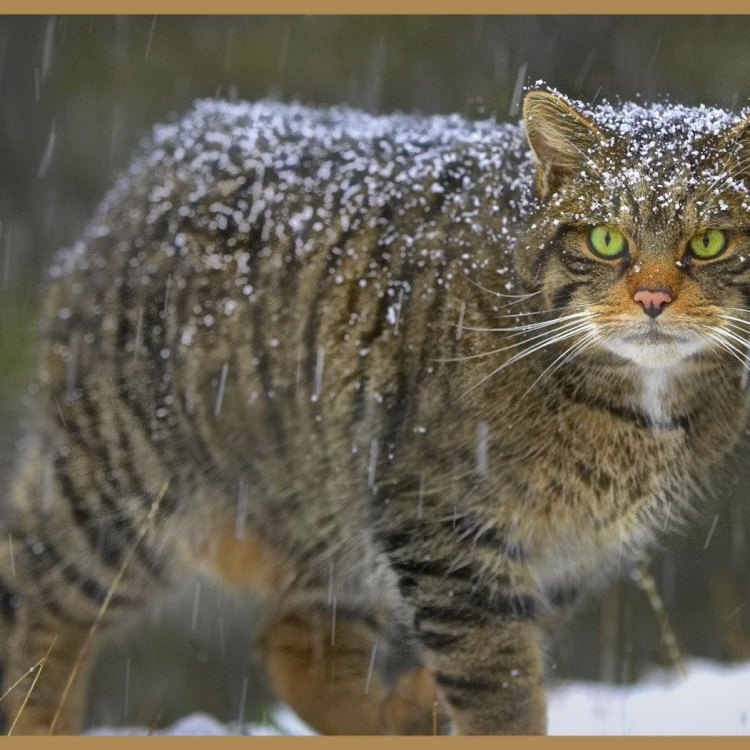
The Elusive and Endangered European Wildcat
Disclaimer: The content provided is for informational purposes only. We cannot guarantee the accuracy of the information on this page 100%. All information provided here may change without prior notice.

